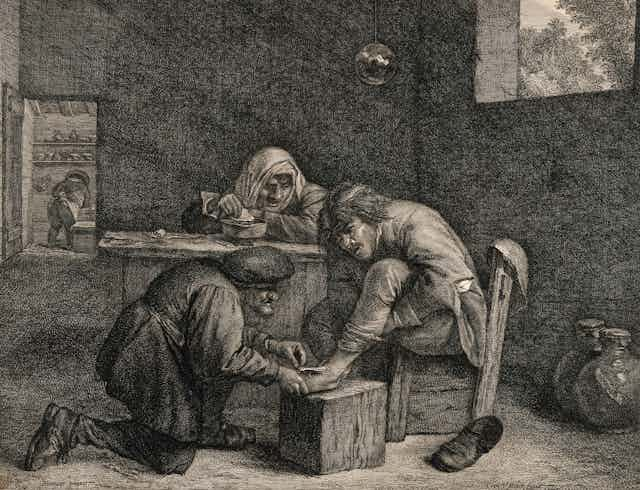Whether it’s the sting of a paper cut or the trauma of battle injury, wounds are woven into the tapestry of human experience. And since ancient times, we’ve fought the enemy that lurks within them – infection.
The constant threat of injury on the battlefield led to the search for new ways to combat wound infection. But early surgical procedures lacked the sterile instruments available today, meaning that for many years, surgery came with the added risk of post-operative wound infection, resulting in high numbers of deaths.
Ancient practices, such as using oils, mud, turpentine, or honey to treat wounds, were common around 2000BC. The Greek physician Hippocrates (460-377BC) used vinegar to clean wounds, followed by bandaging to keep dirt at bay.
While the first hospitals were established in Europe in the middle ages, they were dangerous and brutal places. Wound infection rates were high because of unsanitary conditions and the use of cautery, which involved pushing a burning iron into a patient’s wound until it reached the bone.

By the 1860s, the pioneering surgeon Joseph Lister had revolutionised wound infection treatment by introducing carbolic-acid-soaked bandages. And Robert Wood Johnson, who founded Johnson & Johnson, produced the first sterile gauze bandages by 1890. The combination of antiseptic and sterile bandage marked a turning point in the evolution of wound treatment and infection control.
The discovery of penicillin by Alexander Fleming in 1928 was also a pivotal moment in the treatment of wound infections. By the 1940s, penicillin was being used to treat second world war soldiers who had wound infections that would have been deemed fatal in previous years. For less serious wounds, Lister’s approach of using a dressing and an antiseptic was still used.
Substances like silver and iodine have also been recognised for their antimicrobial properties since the 1800s. Iodine, though effective, caused pain and skin discolouration until safer and less painful formulations were developed in 1949. These formulations endure in modern wound dressings.
For everyday cuts and scrapes, a simple cleaning with water and application of antiseptic cream is usually enough. This helps to prevent the inadvertent introduction of bacteria into the wound, minimising the risk of additional pain and swelling.
But while most wounds nowadays heal without issue, some become become infected. Research published in 2021 showed that 3.8 million people were having their wounds managed by the NHS between 2017 and 2018, up 71% from between 2012 and 2013. They included surgical wounds, leg ulcers and burns. This shows how hard it can be to care for wounds that are difficult to heal and particularly susceptible to infections.
Modern-day challenges
One of the biggest challenges in the modern-day treatment of wound infection is antibiotic resistance. This happens when bacteria develop the ability to defeat the drugs designed to kill them. Resistant infections can be difficult, and sometimes impossible, to treat.
Many bacteria have also become resistant to the antimicrobial ingredients used in wound dressings. This is the case for silver-based wound dressings, which are often used to treat chronic wound infections. This type of wound characteristically fails to heal, and can remain an open, infected wound for many months – or even years. As well as the devastating effect on people’s quality of life, this also places a huge financial burden on the NHS.
The constant fight against wound infections drives extensive research for new, safe and effective treatments. While progress is being made, a crucial hurdle lies in the limitations of laboratory testing methods. These tests, while necessary for regulatory approval, often fail to capture the nuanced realities of wounds in the human body.
No two people are the same and no two wounds are the same either. This can lead to situations where treatments shine in the lab but ultimately prove ineffective in real patients.
Creating wound models

In response to this, scientists are tackling the limitations of lab tests by creating more realistic synthetic wound models. Some are even 3D printing human skin (using leftovers from surgical procedures), or animal skin, complete with artificial body fluids, such as pus. The aim is to create a model environment that mimics real wounds more accurately.
Recently, my own research group has made strides in developing lab models that act like real chronic wounds when treated with antimicrobial dressings. While not perfect, our models are a step in the right direction, contributing to the development of formulations with promising potential for treating wound infections in the future.
Read more: We built a human-skin printer from Lego and we want every lab to use our blueprint
As we navigate the complexities of wound care, the quest for new, effective and safe treatments continues, driven by the efforts of scientists worldwide. We are working towards a future where the management of difficult-to-heal wounds and infections improves, enhancing both individual wellbeing and the efficiency of health systems.

